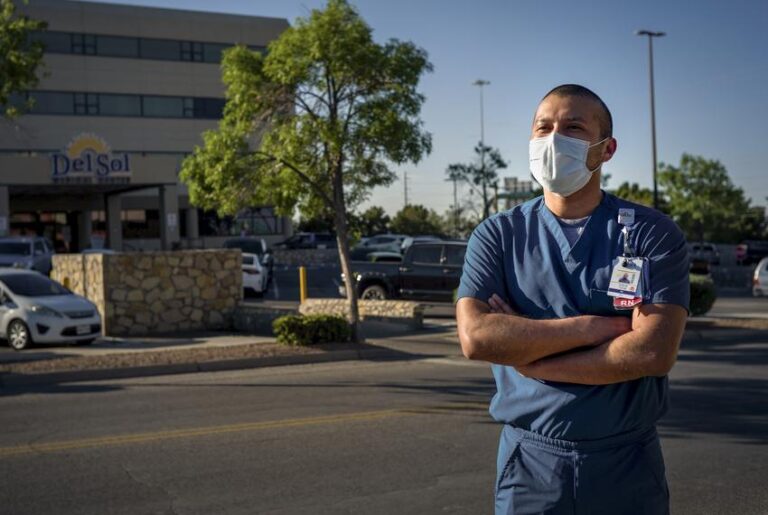10 Infectious Workplace Diseases and How to Protect Against Them
Infectious diseases can sometimes be severe and contagious and many workers, especially those in industries, are at risk of catching them. From sneezing coworkers to poorly ventilated offices, there are plenty of ways germs can spread. While we can’t always control our environment, there are steps we can take to protect ourselves.
This article will explain the most common infectious workplace diseases and the simple but effective measures you can take to keep yourself and your coworkers healthy and to ensure everyone knows how to stay safe.
Common Infectious Workplace Diseases
1. The Common Cold
The viruses that cause common colds are airborne, meaning they spread through tiny droplets in the air when someone sneezes or coughs. One person gets sick and before you know it, half of the office is sneezing and coughing.
It can also survive on surfaces, making that door handle or shared coffee pot a germ hotspot. To reduce your risk, wash your hands regularly and avoid touching your face. Keep tissues handy, and if you’re feeling sick, work from home if possible.
2. Influenza (Flu)
Similar to the common cold but more severe, influenza can knock you out for days, sometimes weeks. Symptoms include fever, chills, body aches, and fatigue. It spreads much like the common cold, but the effects can be far worse, leading to hospitalisations and even death in severe cases.
Annual flu shots are a must. Encourage coworkers to stay home if they’re feeling unwell. And yes, those same hand-washing rules apply!
3. COVID-19
COVID-19 has reshaped our thinking about workplace safety. The virus spreads primarily through respiratory droplets when an infected person talks, coughs, or sneezes. Symptoms vary from mild to severe, including fever, cough and shortness of breath. Some people may not show symptoms but can still spread the virus.
Workplaces have adapted to remote work, but for those in the office, it’s essential to follow guidelines. Wearing masks, practising physical distancing and cleaning frequently touched surfaces all help.
4. Norovirus
Norovirus is known for causing outbreaks of gastrointestinal illness, particularly in places where people work or eat together. It spreads through contaminated food, water, or surfaces, and only a tiny amount of the virus can make someone sick. Symptoms include vomiting, diarrhoea, and stomach cramps.
To prevent an outbreak, it’s crucial to clean surfaces with proper disinfectants and promote hand hygiene, especially around shared eating spaces.
5. Legionnaires’ Disease
Legionnaires is a form of pneumonia caused by a bacteria called Legionella. These bacteria thrive in warm water systems like cooling towers, hot tubs and plumbing systems. People contract it by inhaling tiny droplets of water containing the bacteria. Outbreaks can happen in office buildings, especially where water systems aren’t well maintained.
Legionella training can be used to inform employers, employees and relevant duty holders about the dangers posed by Legionella bacteria and effective risk management and infection control strategies.
6. Tuberculosis (TB)
Though TB isn’t as common in some countries, it’s still a global issue. This airborne disease affects the lungs and can cause a prolonged cough, chest pain and even weight loss. It spreads through the air when someone with active TB coughs or sneezes, making it highly contagious in close working environments.
Regular screening in high-risk areas and early treatment can help stop the spread of TB. Encouraging proper ventilation in workspaces is also vital.
7. Hepatitis A
Hepatitis A is a contagious infection that impacts mainly the liver and is transmitted through the ingestion of contaminated food or water. It’s commonly spread in workplaces where hygiene might be compromised, such as shared kitchens or food prep areas.
Symptoms include fatigue, nausea, stomach pain and jaundice. To prevent Hepatitis A, ensure proper handwashing after using the restroom and before handling food. Vaccination is also available for those at higher risk.
8. Hepatitis B
While Hepatitis B is more often transmitted through blood and bodily fluids, it can still be a concern in workplaces, particularly for healthcare workers or anyone at risk of coming into contact with blood. The infection affects the liver and can lead to long-term complications if not managed.
Vaccination is a highly effective preventive measure for Hepatitis B. Also, providing employees with proper training on handling bloodborne pathogens can reduce the risk of infection.
9. Strep Throat
Strep throat is another common workplace illness caused by bacteria. It spreads through respiratory droplets, making it easy to catch from an infected coworker who’s coughing or sneezing. Symptoms consist of a sore throat, fever, and swollen lymph nodes.
Allowing employees to stay home when they are feeling unwell is essential to prevent the spread of the infection. Additionally, practising good hand hygiene is crucial for prevention.
10. Chickenpox and Shingles
While most people think of chickenpox as a childhood illness, it can still affect adults, especially those who weren’t vaccinated or never caught it. Shingles is a related infection that can occur later in life if you’ve had chickenpox. Both are highly contagious and can quickly spread in close working environments.
Vaccination is the best prevention for chickenpox, and those at risk of contracting shingles should consider getting the shingles vaccine. Isolating affected individuals can also help prevent an outbreak.
Steps to Prevent Workplace Diseases at The Workplace
1. Provide Health and Safety Awareness Training
One of the best ways to prevent workplace diseases is to provide employees with online safety training that covers hygiene practices, recognising symptoms of infectious diseases and knowing when to stay home. This kind of training can be easily accessed online, making it convenient for everyone.
2. Encourage Sick Employees to Stay Home
Let’s be honest: no one likes missing work. But when employees come in sick, they risk spreading infections to others. Make it clear that it’s okay to stay home when feeling under the weather. Encourage remote work options when possible to keep germs at bay.
3. Promote Hand Hygiene
Proper handwashing can’t be stressed enough. Provide hand sanitising stations throughout the workplace and put up reminders in bathrooms about washing hands with soap and water. Clean hands can go a long way in stopping the spread of germs.
4. Maintain Proper Ventilation
Good air circulation and ventilation help reduce the concentration of airborne viruses and bacteria. Ensure the workplace has a well-maintained HVAC system and, when possible, open windows to allow fresh air to flow in.
5. Regularly Clean and Disinfect Surfaces
Common areas like break rooms, bathrooms and meeting rooms can be breeding grounds for germs. Implement a cleaning schedule that targets frequently touched surfaces, such as doorknobs, keyboards, and light switches, to keep them germ-free.
6. Encourage Vaccination
Offering flu shots or other vaccinations in the workplace can help keep employees healthy. Collaborate with local healthcare providers or establish on-site vaccination clinics to help employees get their shots without requiring additional time off.
7. Implement Remote Work Policies
If possible, employees should be allowed to work from home, especially during flu season or pandemics like COVID-19. Remote work reduces the chances of disease transmission and allows sick employees time to recover without risking others.
8. Promote Healthy Habits
Encouraging a healthy lifestyle can boost employees’ immune systems. Promote regular exercise, good nutrition and adequate sleep through wellness programmes. A healthier team is less likely to get sick in the first place.
9. Create a Sick Leave Policy
A clear sick leave policy encourages employees to stay home when they’re not well, reducing the spread of illness. Ensure the policy is fair and flexible so workers don’t feel pressured to come in when they’re contagious.
10. Legionella Training for Facility Management
Legionnaires’ disease can be easily prevented with the proper precautions. Facility management staff should undergo Legionella training to learn how to prevent the growth of Legionella bacteria in water systems. Regularly inspecting and cleaning cooling systems, water tanks, and plumbing can keep this disease at bay.







